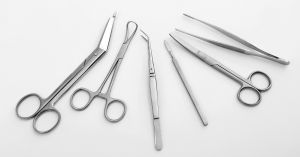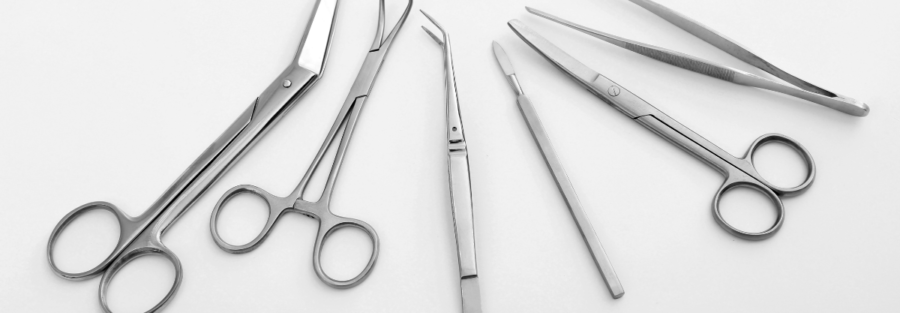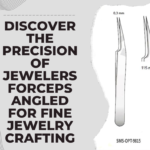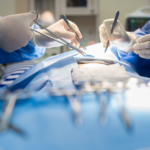Introduction
In the intricate world of surgery, where precision is paramount, surgical clamps emerge as unsung heroes. These small yet essential tools play a crucial role in ensuring that a surgeon’s skilled hands can work with finesse and accuracy. Let’s delve into the world of surgical clamps, exploring their types and the diverse range of functions they serve in the operating room.

The Basics of Surgical Clamps
Surgical clamps are devices designed to hold tissues, blood vessels, or other structures firmly in place during surgical procedures. They come in various shapes and sizes, each tailored to meet specific needs in the operating room. These clamps are typically made of high-quality stainless steel, ensuring durability, corrosion resistance, and the ability to withstand the rigorous demands of surgical environments.
Types of Surgical Clamps
1. Hemostatic Clamps:
– Mosquito Clamp: This small, delicate clamp is ideal for controlling small blood vessels and tissues. Its fine tips provide precise control, making it a staple in delicate procedures.
– Kelly Clamp: Slightly larger than the mosquito clamp, the Kelly clamp is versatile and used for a range of procedures. Its serrated jaws ensure a secure grip on tissues.
2. Towel Clamps:
– Backhaus Towel Clamp: Widely used in non-surgical settings, such as wound care, the Backhaus clamp securely fastens drapes and towels to maintain a sterile field during surgery.
3. Organ Holding Clamps:
– Bulldog Clamp: Commonly used in cardiovascular surgeries, the bulldog clamp is designed to occlude blood vessels temporarily. Its robust structure allows for effective control of blood flow during procedures.
4. Tissue Grasping Clamps:
– Allis Tissue Forceps: Characterized by sharp teeth, these forceps are adept at grasping and holding onto tissue without causing excessive damage. They find applications in various surgical fields.
5. Vessel Occlusion Clamps:
– Satinsky Clamp: Primarily used in vascular surgeries, the Satinsky clamp provides atraumatic occlusion of blood vessels. Its unique design allows for effective control without causing damage to the vessel walls.
Uses of Surgical Clamps
1. Hemostasis:
– Surgical clamps play a crucial role in achieving hemostasis by controlling bleeding from blood vessels during a procedure. This is particularly important in surgeries involving delicate structures or those with a high risk of bleeding.
2. Tissue Manipulation:
– Surgeons use tissue-grasping clamps to hold and manipulate tissues, providing a clear and stable field for precise surgical maneuvers.
3. Organ Retraction:
– Clamps like the bulldog clamp aid in organ retraction, exposing the surgical site and facilitating access to targeted structures.
4. Temporary Occlusion:
– Vascular clamps, such as the Satinsky clamp, are employed to temporarily occlude blood vessels, allowing surgeons to work on specific segments without compromising the overall blood flow.
Frequently Asked Questions
How can I ensure the proper care and maintenance of surgical clamps?
Proper care and maintenance of surgical clamps are essential to ensure their longevity and functionality. Follow the manufacturer’s instructions for cleaning, sterilizing, and storing the clamps. Regular inspections should be performed to detect any signs of wear or damage. If any issues arise, consult the manufacturer or a medical equipment professional for guidance.
Can surgical clamps be used in minimally invasive surgeries?
Yes, surgical clamps can be used in minimally invasive surgeries. However, the design and size of the clamps may vary to accommodate the smaller incisions and limited space involved in these procedures. Specialized laparoscopic or robotic surgical clamps are often used in minimally invasive surgeries.
How do surgeons choose the appropriate size and shape of a surgical clamp?
Surgeons consider various factors when selecting a surgical clamp, such as the specific tissue or structure being clamped, the size of the vessel or tissue, and the surgical technique being used. Surgeons rely on their experience, surgical guidelines, and the specific requirements of the procedure to determine the appropriate size and shape of the clamp.
Conclusion
In the intricate dance of surgery, where every movement counts, surgical clamps stand as silent sentinels, ensuring stability, control, and precision. From the delicate mosquito clamp to the robust bulldog clamp, each type plays a unique role in the success of a surgical procedure. As technology advances, the world of surgical instruments continues to evolve, but the fundamental role of surgical clamps in achieving surgical excellence remains unwavering.







1 Comment
The Precision Tools of Surgery: Unveiling the World of Surgical Clamps | malayainsight
[…] is paramount. One of the unsung heroes in the operating room that ensures this precision is the surgical clamp. These small yet mighty instruments play a crucial role in holding tissues and vessels securely, […]